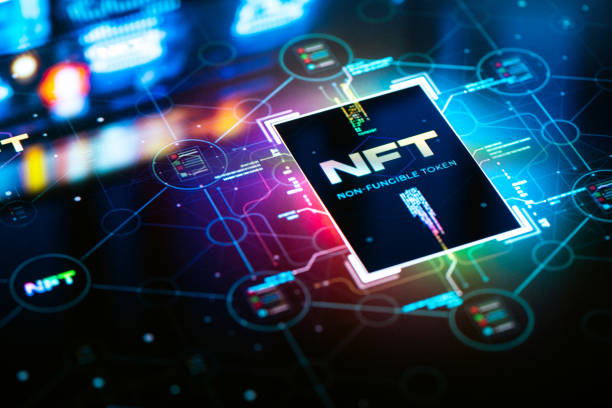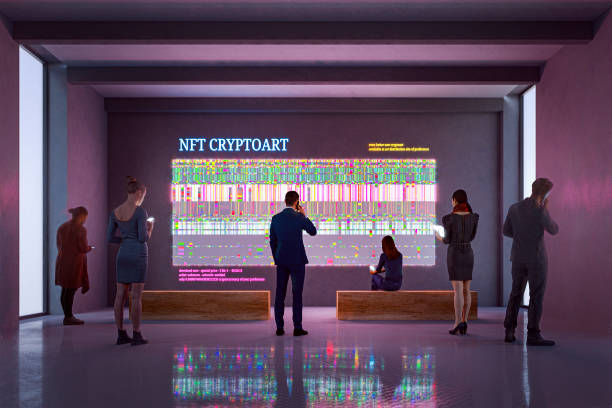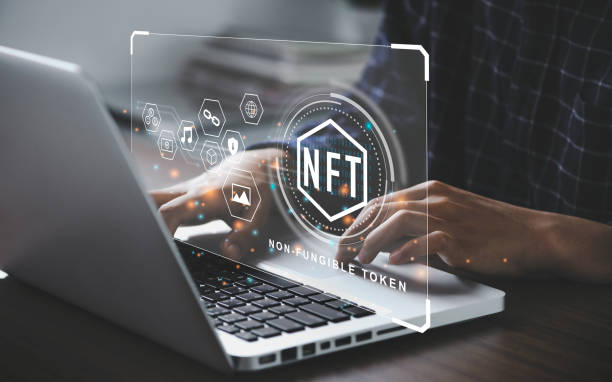Bridging the Physical and Digital: A Deep Dive into NFTs and Real-World Asset Tokenization
The financial landscape is undergoing a digital revolution, spearheaded by blockchain technology. One of the most intriguing applications of blockchain lies in the emergence of Non-Fungible Tokens (NFTs) and their potential to revolutionize how we own and interact with real-world assets. This article delves into the world of NFT-based real-world asset tokenization, exploring its transformative potential, the challenges it presents, and the exciting new landscape it creates.
Understanding the Fundamentals: NFTs and Tokenization
Before we delve into the world of tokenized real-world assets, it's crucial to understand the underlying concepts.
- Non-Fungible Tokens (NFTs): NFTs are unique digital certificates stored on a blockchain. Unlike fungible tokens like Bitcoin (where one unit is identical to another), each NFT is one-of-a-kind. It acts as a digital representation of ownership for a specific physical or digital asset. Blockchain technology ensures secure, transparent, and verifiable ownership records for NFTs.
- Tokenization: The process of converting a real-world asset into a digital representation on a blockchain is known as tokenization. This digital representation, in the form of an NFT, acts as a tradable token that embodies ownership rights to the underlying asset.
Real-World Assets Take a Digital Leap
The potential applications of NFT-based real-world asset tokenization are vast and transformative. Here are some prominent examples that showcase the possibilities:
- Real Estate: Brick-and-mortar properties can be tokenized, enabling fractional ownership. This could democratize real estate investment, making it more accessible to a broader range of investors with smaller capital. Fractional ownership also facilitates increased liquidity, allowing investors to buy and sell portions of a property more easily compared to traditional methods.
- Fine Art and Collectibles: Expensive artwork, rare collectibles, and other high-value assets can be tokenized, enhancing security and streamlining ownership transfers. NFTs also create a verifiable record of provenance, making it easier to track ownership history and combat fraud.
- Luxury Goods: High-end watches, handbags, and other luxury items can be represented by NFTs, providing a secure and transparent way to prove authenticity and ownership. This can be particularly valuable for secondary markets in luxury goods.
- Intellectual Property: Copyrights, patents, and trademarks can be tokenized, offering a novel way to manage ownership rights and facilitate royalty payments.
Benefits of Tokenization: A New Era for Asset Ownership
Tokenization offers several advantages over traditional ownership models:
- Increased Liquidity: Tokenized assets can be easily traded on secondary markets, providing greater liquidity for investors.
- Fractional Ownership: Assets can be divided into smaller fractions, making them more accessible to a wider range of investors.
- Enhanced Security: Blockchain technology provides a secure and tamper-proof record of ownership, minimizing the risk of fraud.
- Improved Efficiency: Tokenization can streamline administrative processes associated with asset ownership and transfer.
- Global Reach: Digital assets can be traded on a global scale, bypassing geographical limitations.
Challenges and Considerations: Navigating the Uncharted Territory
Despite its potential, NFT-based real-world asset tokenization faces some challenges:
- Regulation: The regulatory landscape surrounding NFTs and tokenized assets is still evolving. Clear guidelines and regulations are needed to ensure investor protection and prevent fraud.
- Valuation: Determining the fair market value of tokenized assets, especially for unique or illiquid real-world assets, can be complex.
- Technical Infrastructure: The underlying blockchain technology needs to scale to accommodate a wider range of assets and handle a higher volume of transactions.
- Security vulnerabilities: Blockchain platforms and smart contracts, used for tokenization, can be susceptible to hacking and exploits.
![]()
The Future of Tokenization: A Collaborative Effort
Real-world asset tokenization promises to reshape the way we own and manage assets. As the technology matures, overcoming the challenges and fostering collaboration among key players is crucial. Here's what the future might hold:
- Standardization and Regulatory Clarity: Standardized protocols and clear regulations will be essential for building trust and encouraging wider adoption.
- Improved Security Measures: Continuous development and implementation of robust security measures are critical to protect investors and assets.
- Integration with Traditional Systems: Integrating tokenization with existing financial systems will facilitate seamless interaction and broader acceptance.
- Enhanced Transparency and Efficiency: Tokenization can improve transparency across various industries, simplifying processes and reducing administrative burdens.
Beyond the Hype: Exploring Practical Applications
While the initial excitement surrounding NFTs often focused on digital art and collectibles, the true potential of this technology lies in its ability to bridge the gap between the physical and digital worlds. Here are some specific applications that showcase this:
- Revolutionizing Supply Chains with Transparency: Imagine being able to trace the origin of your diamond ring or the ethically sourced cotton used in your favorite t-shirt. NFTs can be used to track the journey of a product from its source (e.g., ethically sourced cotton farm) through manufacturing and distribution to the final consumer. This transparency empowers consumers to make informed purchasing decisions and promotes ethical practices within supply chains.
- Combating Counterfeiting: Luxury goods, pharmaceuticals, and other items susceptible to counterfeiting can benefit immensely from NFT-based tokenization. Each product can have a unique NFT linked to it, providing a verifiable record of authenticity throughout its lifecycle. This can significantly reduce counterfeiting and protect consumers from fraudulent products.
Transforming the Art World: Democratizing Access and Monetization
- Fractional Ownership of Fine Art: Owning a piece of world-renowned art often requires significant investment. Tokenization allows for fractional ownership, where multiple individuals can co-own a single artwork, represented by an NFT. This opens doors for a broader audience to invest in the art market and potentially share in the appreciation of the artwork's value. Imagine co-owning a Monet or a Van Gogh with a group of like-minded art enthusiasts!
- Artist Royalties on Secondary Sales: Traditionally, artists receive a one-time payment for their work. Smart contracts embedded within NFTs can be programmed to automatically send royalties to the artist every time the NFT is resold on a secondary market. This empowers artists to benefit financially from the ongoing appreciation of their work, even after the initial sale.
Shaping the Future of Intellectual Property
- Secure Management of Copyrights and Patents: NFTs can be used to represent ownership of intellectual property (IP) like copyrights and patents. This provides a secure and verifiable record of ownership on a tamper-proof blockchain. It also simplifies the licensing process and facilitates royalty payments to copyright holders. Imagine musicians or authors having a more streamlined way to manage their intellectual property rights.
- Facilitating Content Monetization: Content creators, such as musicians or writers, can leverage NFTs to tokenize their work, offering exclusive content or experiences to token holders. This opens up new avenues for monetization and fosters a closer connection between creators and their audiences. Imagine a musician releasing a limited edition NFT of a song that includes access to exclusive behind-the-scenes content or a virtual meet-and-greet.

The Rise of Tokenized Collectibles and Fan Engagement
- Owning a Piece of Sports History: Imagine owning a digital token representing a game-winning play or a historic signed jersey. NFTs can be used to tokenize unique memorabilia from the sporting world, offering fans a new way to engage with their favorite teams and athletes. This could create a whole new market for digital sports collectibles.
- Exclusive Membership and Experiences: NFTs can be used to provide exclusive membership benefits within fan communities. Owning an NFT could grant access to VIP experiences, merchandise discounts, or exclusive content, fostering a deeper connection between fans and their passion points. Imagine owning an NFT that grants you access to exclusive pre-sale tickets for concerts or sporting events.
Evolving Investment Strategies: New Frontiers for Asset Management
- Investing in Venture Capital with Increased Liquidity: Venture capital investments traditionally suffer from illiquidity. Tokenization of venture capital assets could potentially offer greater liquidity for investors, allowing them to enter and exit positions more easily. This could open up venture capital opportunities to a wider range of investors.
- Real Estate Investment Trusts (REITs) Reinvented: REITs, which allow individuals to invest in real estate portfolios, can be further democratized with tokenization. Fractional ownership of REITs through NFTs can make real estate investment more accessible to a wider range of investors with lower capital outlays. Imagine being able to invest in a fraction of a high-rise office building or a shopping mall.
A Call to Action: Building the Future of Tokenization
The potential applications of NFT-based real-world asset tokenization extend far beyond the examples mentioned above. As the technology matures, collaboration will be key. Here's how we can navigate the path forward:
- Industry Collaboration: Collaboration between traditional industries, technology providers, and regulatory bodies is crucial for developing standardized protocols and establishing clear regulatory frameworks to ensure investor protection and market stability.
- Investor Education: Educating investors about the benefits and risks associated with NFT-based tokenization is essential for building trust and encouraging responsible investment practices.
- Technological Innovation: Continuous research and development are needed to enhance the scalability, security, and efficiency of blockchain platforms supporting tokenization.

Conclusion: A Paradigm Shift in Asset Ownership
NFTs and real-world asset tokenization represent a paradigm shift in asset ownership. The ability to securely and efficiently represent ownership of real-world assets digitally opens exciting doors for investors, businesses, and individuals alike. While challenges exist, collaboration and innovation hold the key to unlocking the full potential of this transformative technology. As we move forward, the possibilities are truly boundless. Here are some additional thoughts to consider for the conclusion:
- The Democratization of Ownership: Tokenization has the potential to make a wider range of assets accessible to a broader spectrum of investors. This could democratize wealth creation and participation in previously exclusive investment opportunities.
- The Future of Fractional Ownership: Fractional ownership of assets like real estate, art, and even luxury goods could become commonplace. This could lead to increased liquidity in traditionally illiquid markets and open doors for new investment strategies.
- The Rise of the Programmable Economy: Smart contracts embedded within NFTs can automate various processes associated with asset ownership, from managing fractional ownership to facilitating royalty payments. This could lead to a more efficient and streamlined financial ecosystem.
- The Evolving Role of Intermediaries: Traditional intermediaries like banks and investment firms may need to adapt their roles in a tokenized world. They could potentially offer new services related to asset custody, management of tokenized assets, and facilitating secondary market transactions.
- The Need for Ethical Considerations: As tokenization continues to evolve, ethical considerations surrounding areas like valuation, consumer protection, and environmental impact of blockchain technology need to be addressed.
In conclusion, NFT-based real-world asset tokenization represents a significant step towards a future where asset ownership is more secure, transparent, and accessible. By embracing innovation, fostering collaboration, and addressing the challenges that lie ahead, we can unlock the immense potential of this technology and shape a more inclusive and efficient financial landscape. The future of asset ownership is undoubtedly digital, and NFTs are poised to play a pivotal role in this exciting transformation.














![[LIVE] Engage2Earn: auspol follower rush](https://cdn.bulbapp.io/frontend/images/c1a761de-5ce9-4e9b-b5b3-dc009e60bfa8/1)

































![[ℕ𝕖𝕧𝕖𝕣] 𝕊𝕖𝕝𝕝 𝕐𝕠𝕦𝕣 𝔹𝕚𝕥𝕔𝕠𝕚𝕟 - And Now What.... Pray To The God Of Hopium?](https://cdn.bulbapp.io/frontend/images/79e7827b-c644-4853-b048-a9601a8a8da7/1)
















